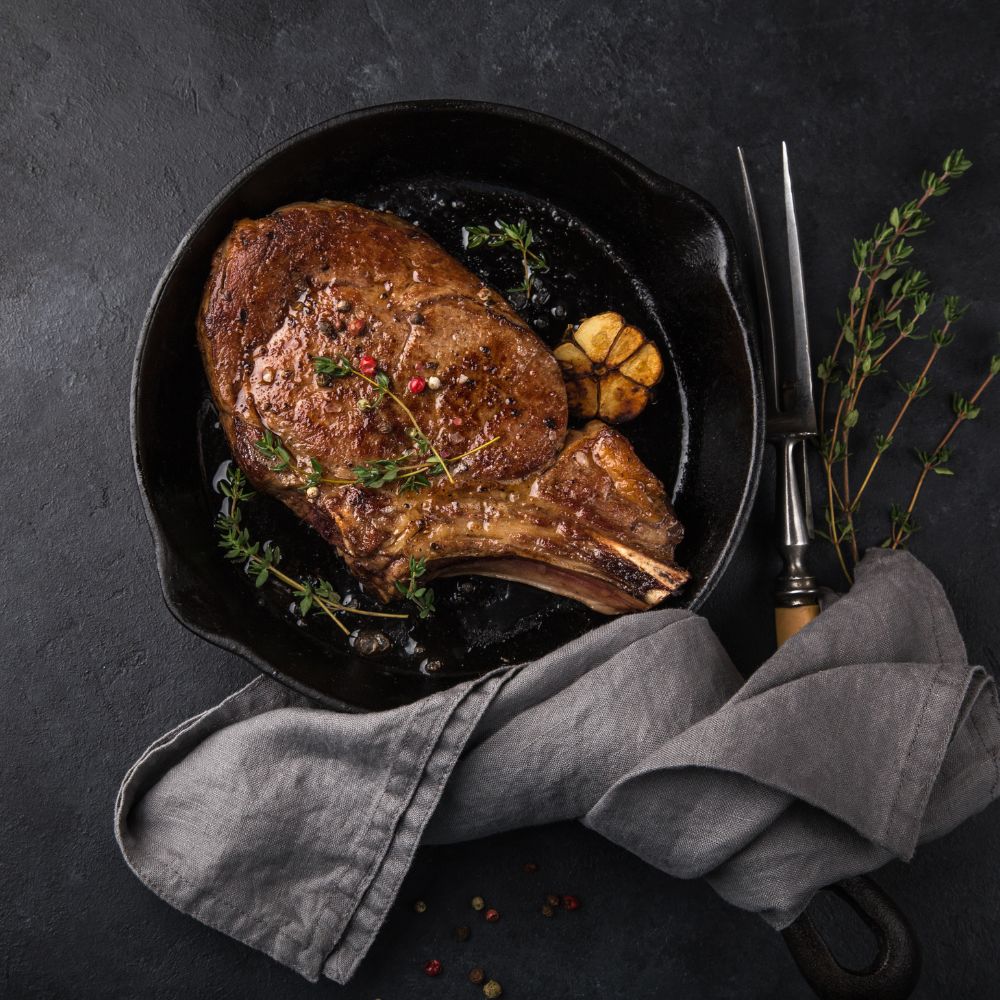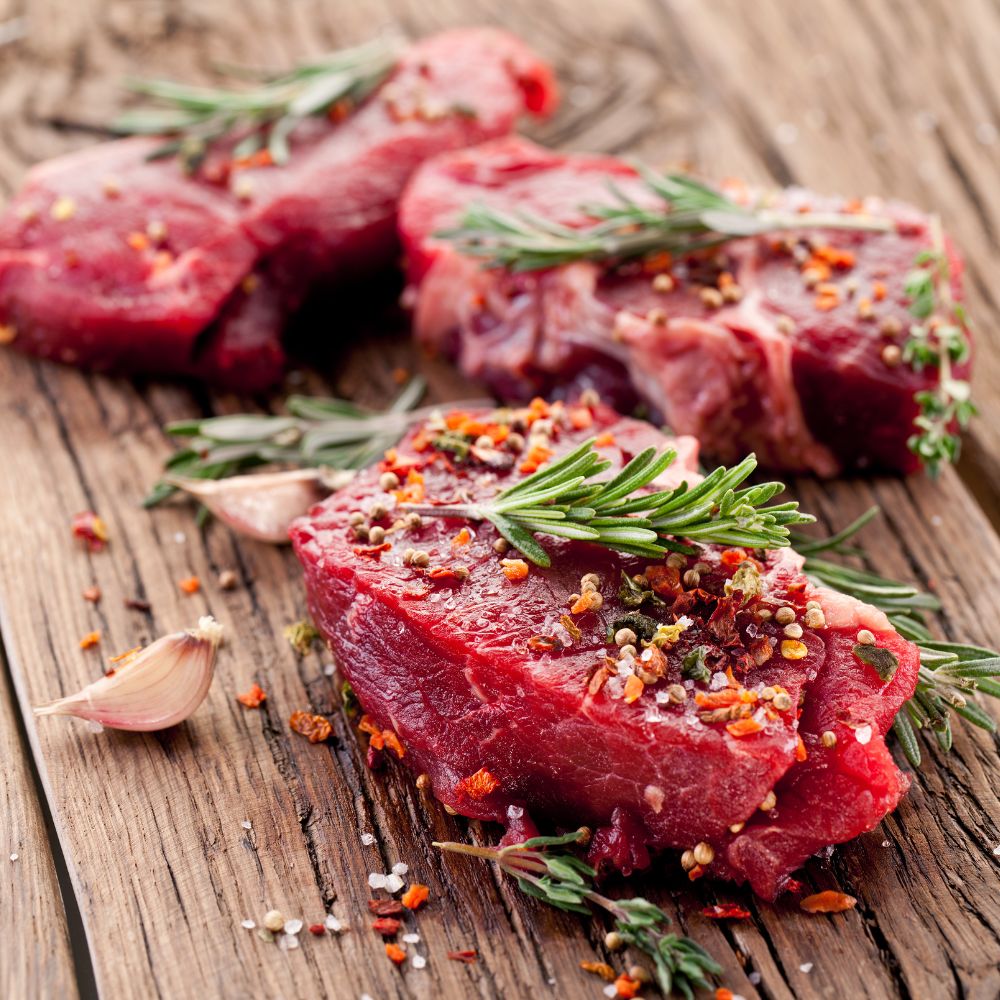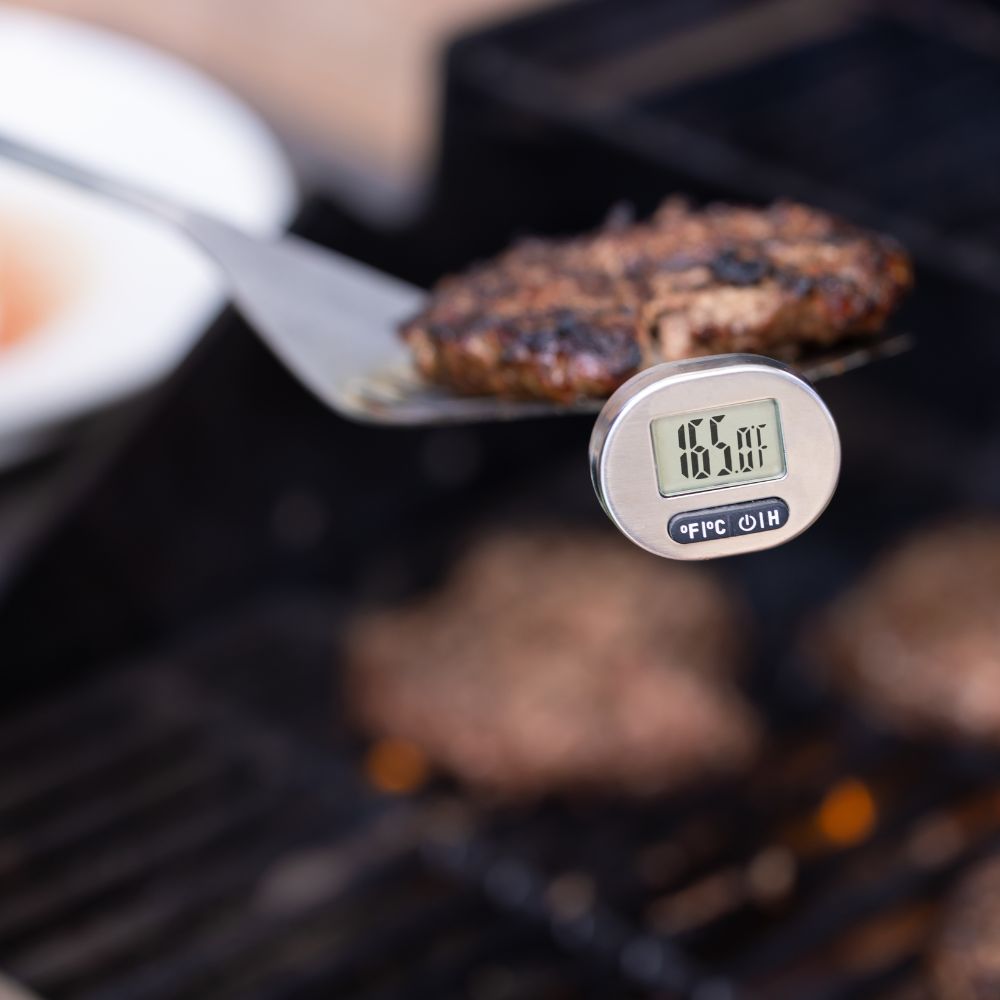Properly Cooking Beef Filet – This Guarantees Full Flavor!
Beef filet is one of the most sought-after types of meat and for good reason. Properly prepared, it becomes the aromatic highlight of a meal. A high-quality filet like this should be prepared in such a way that its flavor is best brought out. Here you will learn how to guarantee quality and properly cook a beef filet.
Properly Purchasing Beef Filet
The taste of a beef filet does not depend solely on the preparation. The selection of good meat and the right equipment also play a role. Are you wondering how to find and recognize a good beef filet?
Order from a trusted supplier or butcher who not only considers the price but also the welfare of the animal and proper storage. The color of the beef also reveals something about its quality. The filet should not be bright red. It should appear dull dark red or matte brown. Bright red meat has not aged long enough and will shrink in the pan when cooking.
Preparing Meat For Cooking
Before you cook the beef filet, it needs to be prepared. If you want to marinate it, place it in a marinade of oil and spices the day before.
Take it out of the refrigerator an hour before cooking to allow the meat to adjust to room temperature. The filet pieces should be four to five centimeters thick. If necessary, cut large filets into portion-sized pieces of this thickness.
Afterward, it's time to trim it. If you still see small fat strips or tendons, cut them off. Also, eliminate any coarse irregularities to ensure that the meat is evenly cooked later. Salt and pepper should be added to the filet after cooking. If you salt it before cooking, it will draw out the juice from the meat.
Selecting The Right Frying Pan
Heavy cast-iron pans are best suited for frying. This material absorbs a lot of heat and transfers it evenly to the meat. Make sure the bottom of the pan is flat. This allows for harmonious and even heating, so you can properly cook your beef filet.
When you cook a beef filet, the key is a good start. A juicy filet should be seared in a hot, properly greased pan. This ensures that the outside becomes crispy and retains the meat juice. This results in a juicy beef filet.
You can use vegetable oils that withstand high heat for greasing. Connoisseurs swear by clarified butter. Add two to three tablespoons of oil or a little clarified butter to the pan. Heat the fat until a wet wooden spoon slightly sizzles in the pan.
Preparing The Pan And Observing Cooking Stages
Once the beef filet has reached room temperature, you can start cooking. When the meat in that state hits the hot fat, the pores close well. Before you cook the beef filet, you should of course know how you want to enjoy the meat – rare, medium, or well-done?
A rare beef filet needs about two minutes of cooking time on each side. It has a brown crust but is still nicely raw and slightly bloody inside. Medium filets are fried for 3-4 minutes on each side. Here too, you need to sear the meat so that an aromatic crust forms. Inside, the meat should still be soft and pink. Well-done means the filet is fully cooked after about 5 minutes per side.
Properly Cooking Beef Filet
The cooking process involves several steps. You need a spatula. Definitely do not pierce the meat with a fork or knife while cooking the beef filet. Otherwise, the crust will be damaged and the meat juice will be lost.
- Place the beef filet in the pan once the fat is properly hot.
- Sear the filet for one minute on one side.
- Turn the meat and sear for one minute on the other side.
- Reduce the heat to medium.
- Turn the filet and sear again for one minute on both sides.
- Add a tablespoon of butter and reduce the temperature again.
- Season the filet with freshly ground pepper and salt.
- Continue cooking it for a while depending on the desired doneness.
- The filet should still yield when pressed with a finger.
A Short Rest Period For The Beef Filet
If you want to properly cook a beef filet, a rest period is essential. Remove the meat from the pan and wrap it in aluminum foil. Let it rest for two minutes.
Why is this rest period so important? During this time, the meat relaxes and the juice is evenly distributed. Both ensure that the beef filet tastes tender and juicy. Any escaping meat juice is caught by the foil.
Tips For Perfection
Do you want to cook a beef filet and further perfect it? If you don't trust your own finger test while cooking, you can professionally measure the core temperature. Use a meat thermometer and aim for the following core temperatures when cooking a beef filet:
rare: 44–47 °C
medium: 56–59 °C
well-done: 60 °C
The eyes eat too, as the saying goes. This principle also applies when serving beef filet. Delicate filet pieces in a juicy pink tone make many people's mouths water figuratively. Don't cut the filet too early, otherwise, it will lose its pink color. Use a sharp large knife. Cut the meat against the grain into bite-sized strips as needed.
Side Dishes And Serving Suggestions
Sauces, side dishes, and garnishes also play an important role in complementing beef filet. Red wine or gravy makes a classic complement. You can also treat your guests to special recipes like Cumberland sauce, balsamic sauce, or other options. Beef filet offers versatile combinations.
As garnish and side dish, herb butter is widespread. Fresh herb butter, prepared the day before and left to infuse in the refrigerator, tastes particularly good. You can also complement beef filet with potatoes or various vegetables. Ideally, the side dish should contrast well with the meat in color.
Sometimes even meat is used as a side dish for beef filet. You can fry streaky bacon and combine it with a salad or serve the beef filet with boiled ox marrow and chives.





Leave a comment
This site is protected by hCaptcha and the hCaptcha Privacy Policy and Terms of Service apply.